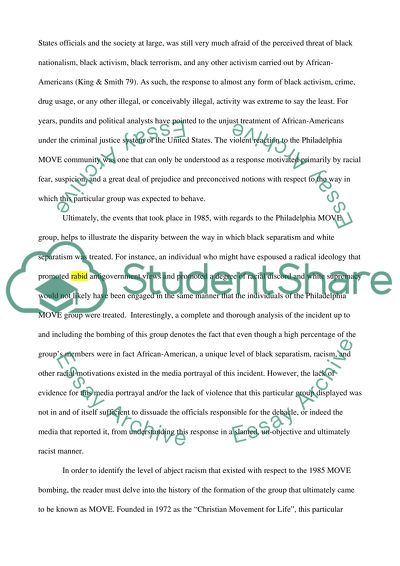Cite this document
(“MOVE Philadelphia Bombing Research Paper Example | Topics and Well Written Essays - 1750 words”, n.d.)
MOVE Philadelphia Bombing Research Paper Example | Topics and Well Written Essays - 1750 words. Retrieved from https://studentshare.org/history/1494073-move-philadelphia-bombing
MOVE Philadelphia Bombing Research Paper Example | Topics and Well Written Essays - 1750 words. Retrieved from https://studentshare.org/history/1494073-move-philadelphia-bombing
(MOVE Philadelphia Bombing Research Paper Example | Topics and Well Written Essays - 1750 Words)
MOVE Philadelphia Bombing Research Paper Example | Topics and Well Written Essays - 1750 Words. https://studentshare.org/history/1494073-move-philadelphia-bombing.
MOVE Philadelphia Bombing Research Paper Example | Topics and Well Written Essays - 1750 Words. https://studentshare.org/history/1494073-move-philadelphia-bombing.
“MOVE Philadelphia Bombing Research Paper Example | Topics and Well Written Essays - 1750 Words”, n.d. https://studentshare.org/history/1494073-move-philadelphia-bombing.


